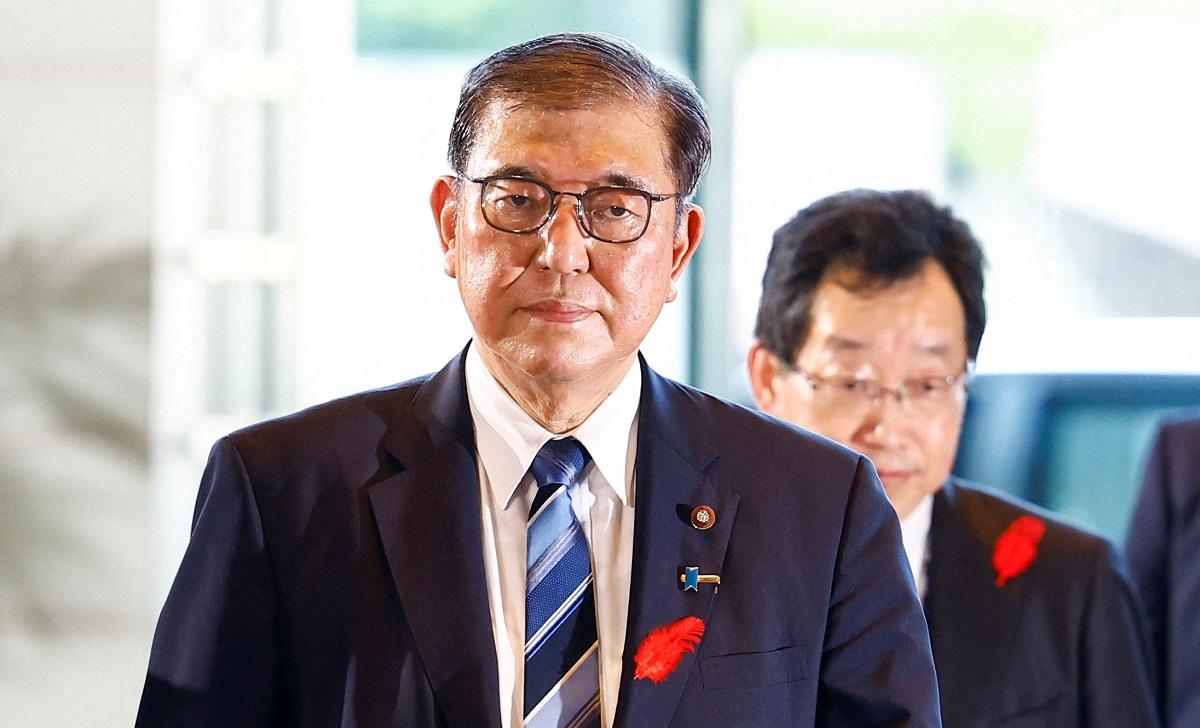Japan’s new PM Ishiba unveils cabinet ahead of snap election

TOKYO — Japan's new Prime Minister Shigeru Ishiba on Tuesday unveiled his cabinet as he seeks to heal party divisions and secure a national mandate with an Oct. 27 snap election.
The 67-year-old former defense minister, who last week won a close-fought contest to lead the ruling Liberal Democratic Party (LDP), was confirmed earlier in the day as prime minister by parliament. He is scheduled to hold his first press conference later in the day in Tokyo.
The Ishiba administration's approach to diplomacy with Japan's closest ally, the United States, will be in focus, as he has repeatedly called for a more balanced relationship with Washington.
He has also proposed creating an Asian version of the collective security group NATO to deter China, an idea that could draw ire from Beijing and has already been dismissed by a senior US official as hasty.
Ishiba must quell simmering anger at home over rising living costs and a sluggish economy, and navigate a volatile security environment in East Asia fueled by an increasingly assertive China and nuclear-armed North Korea.
The veteran lawmaker, seen as somewhat of a party outsider who failed at four previous leadership bids, has named a mix of rivals and allies and to a cabinet of 20 ministers that includes only two women, fewer than half the previous administration.
Among the men are two leadership rivals in key positions, Katsunobu Kato as finance minister and Yoshimasa Hayashi to stay on as chief cabinet secretary, a post that includes the role of top government spokesman, the government announced.
The appointment of Kato, a proponent of former premier Shinzo Abe's "Abenomics" expansionary fiscal and monetary policies, appears to be a balancing act to alleviate concerns over the next cabinet's economic strategy.
The Nikkei stock index fell nearly 5% on Monday in reaction to a surging yen following Ishiba's win over Sanae Takaichi, a monetary dove and fiscal expansionist, in Friday's leadership contest. The index recovered ground on Tuesday.
A close Ishiba ally, Takeshi Iwaya, a former defense chief, will take over as foreign minister, while Gen Nakatani will return to the defense ministry, a position he held in 2016. Yoji Muto, a former junior minister, will take charge at the economy, trade and industry ministry.
In his victory speech on Friday, he spoke about the need to beef up Japan's security after recent territorial incursions by Chinese and Russian military vessels.
Outside the tent
Five of the lawmakers who contested the leadership race with him have not been included in his government nor given key party jobs.
Among them is Takaichi, a hardline conservative he beat by 215 votes to 194 on Friday in the closest leadership election in almost seven decades. Local media reported she had declined a senior party post.
That could make it difficult for Ishiba, a perennial favorite in public opinion polls, to manage a fractious ruling group roiled by scandals including unrecorded donations at fundraising parties.
Yoshihiko Noda, the leader of the largest opposition party the Constitutional Democratic party of Japan, said it planned to attack the LDP over its scandals in the upcoming election.
"We cannot establish proper governance through a pseudo-regime change," Noda said on public broadcaster NHK.
But despite its troubles, the party which has ruled Japan for most of the post-war era remains likely to hold on to power in the upcoming election given Japan's weak opposition.
A third of respondents to a weekend poll by the Mainichi newspaper said they supported the LDP, versus 15% for the main opposition Constitutional Democratic Party of Japan.
More than half of the respondents, including those who supported opposition parties, said they were optimistic about Ishiba's appointment. — Reuters




